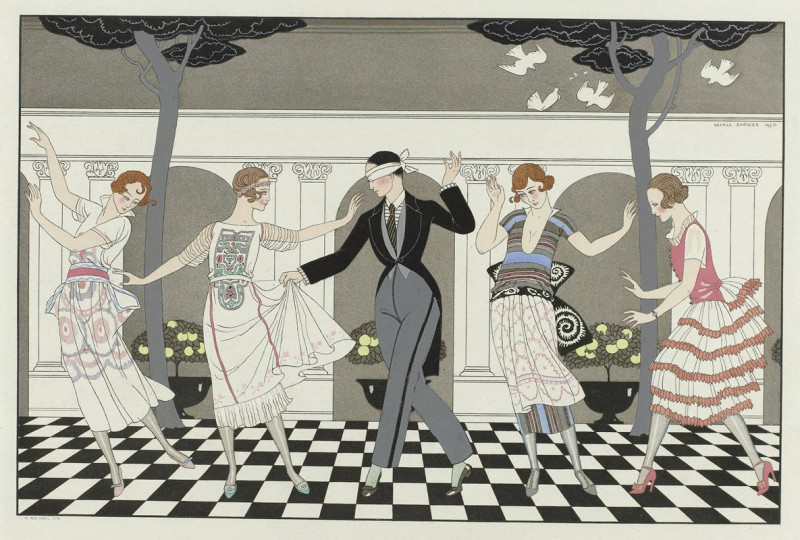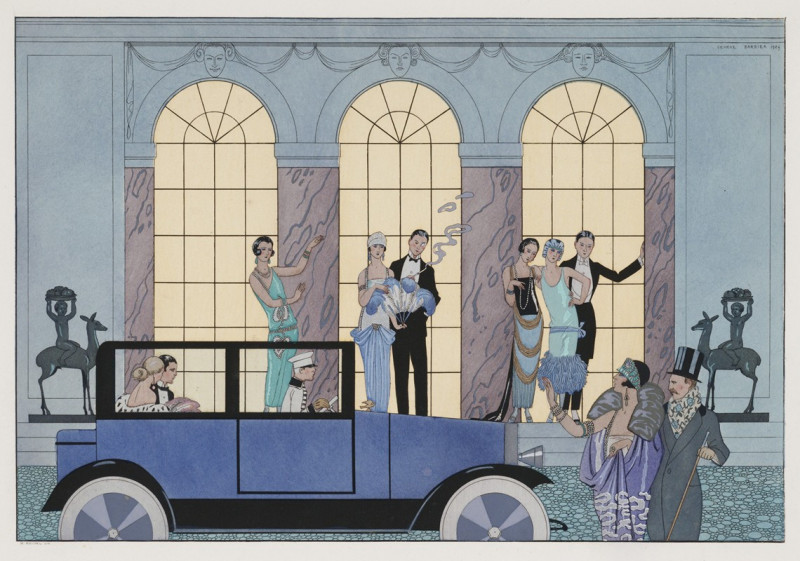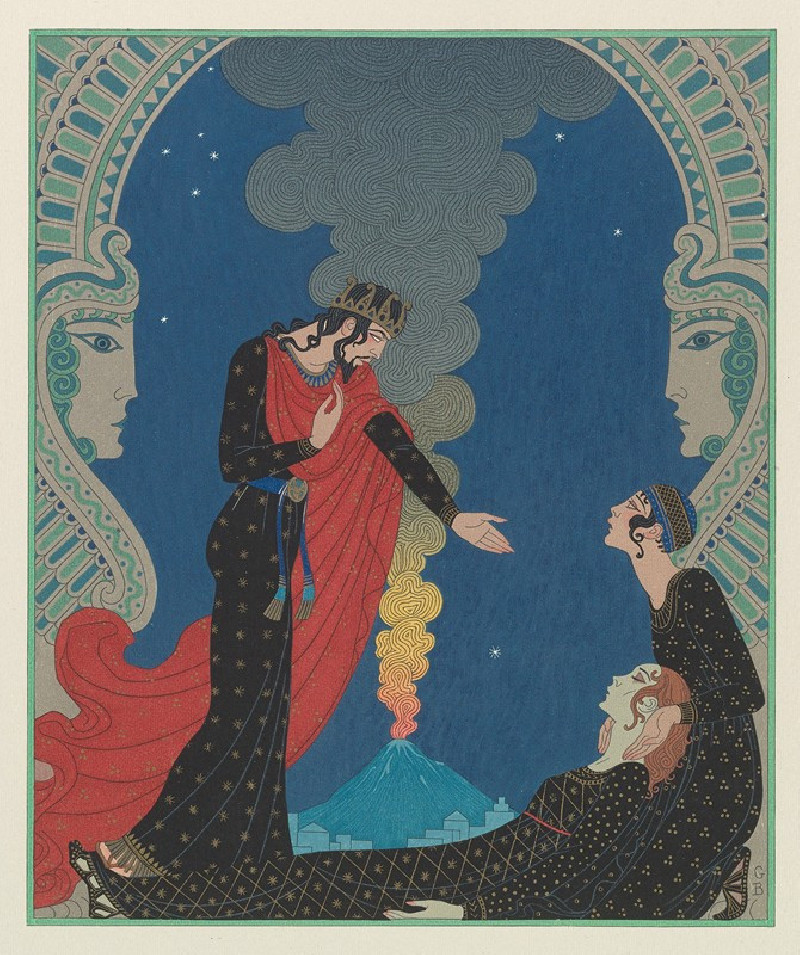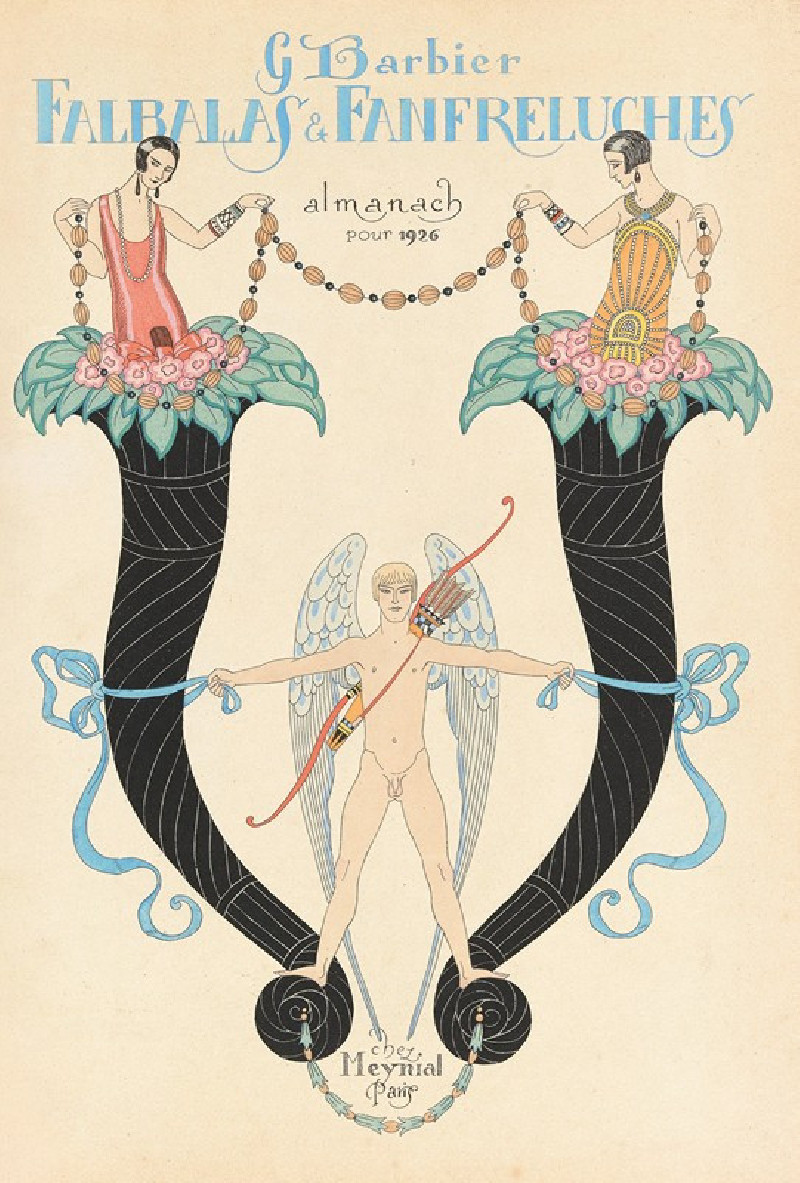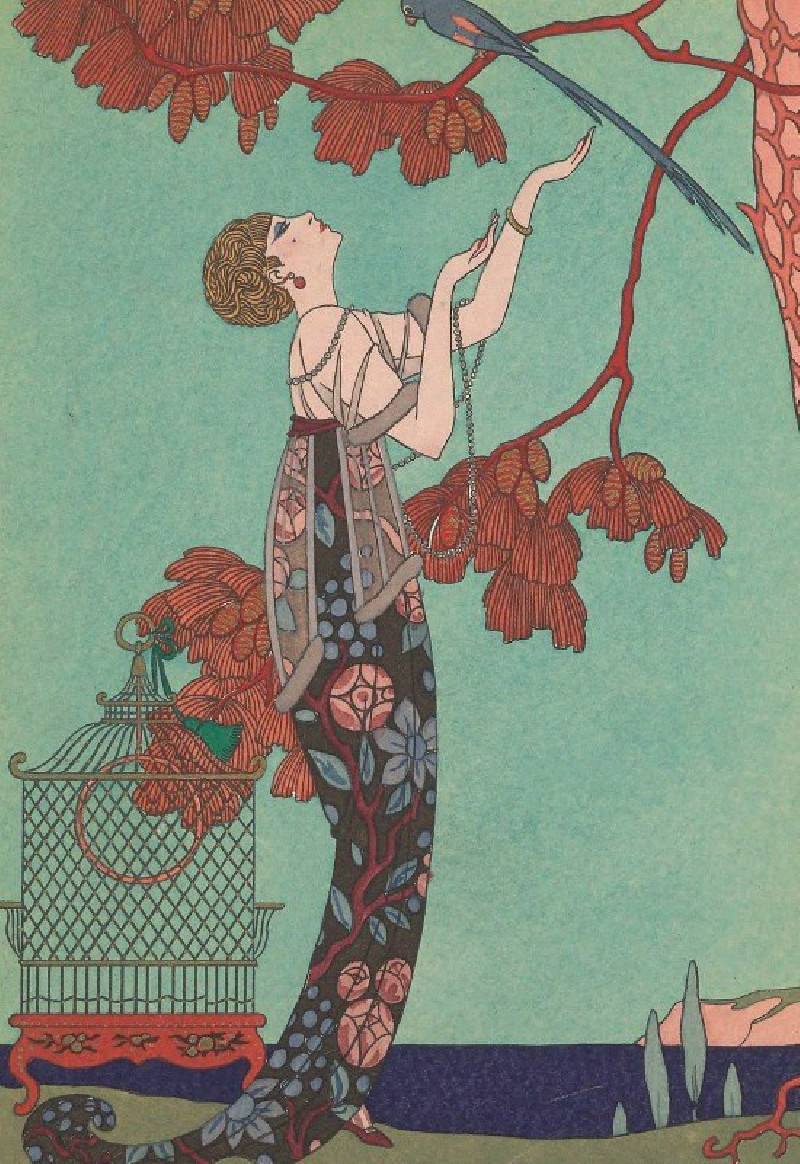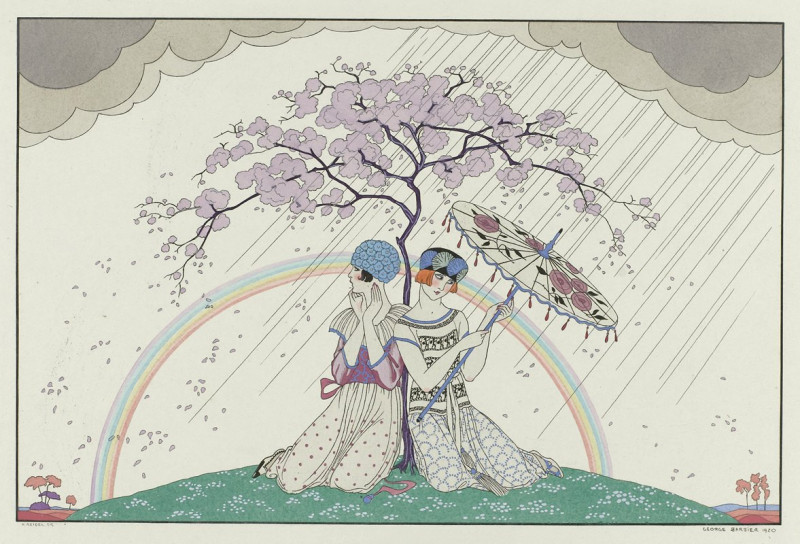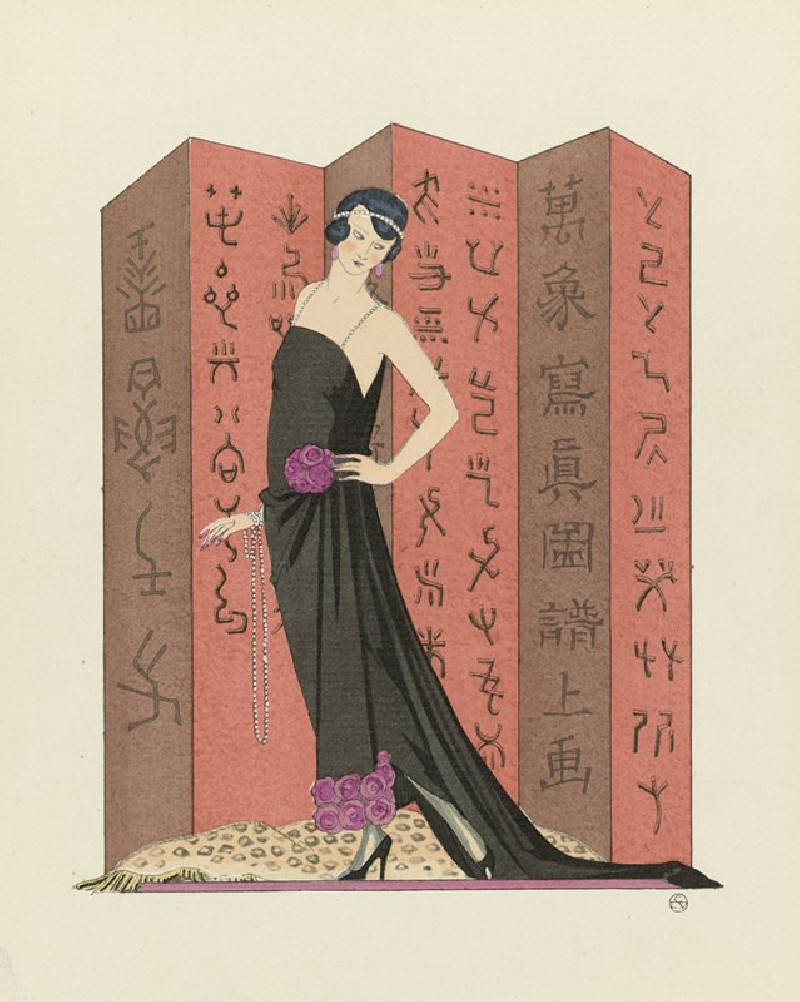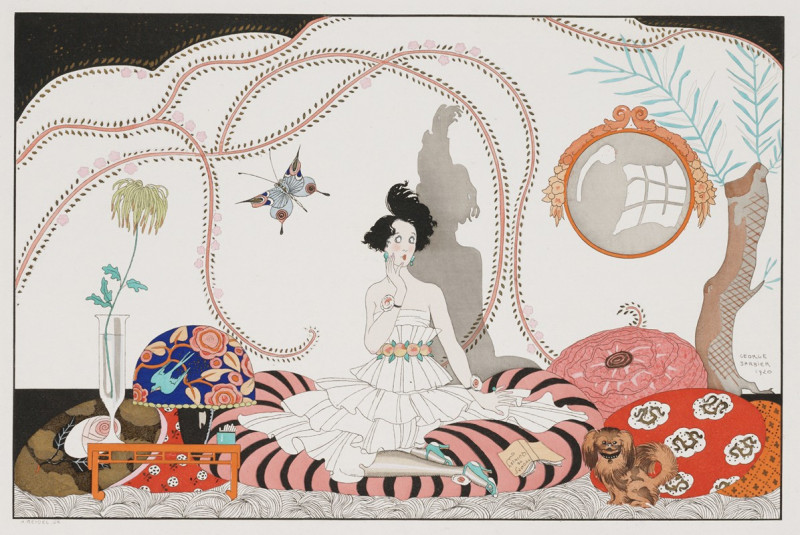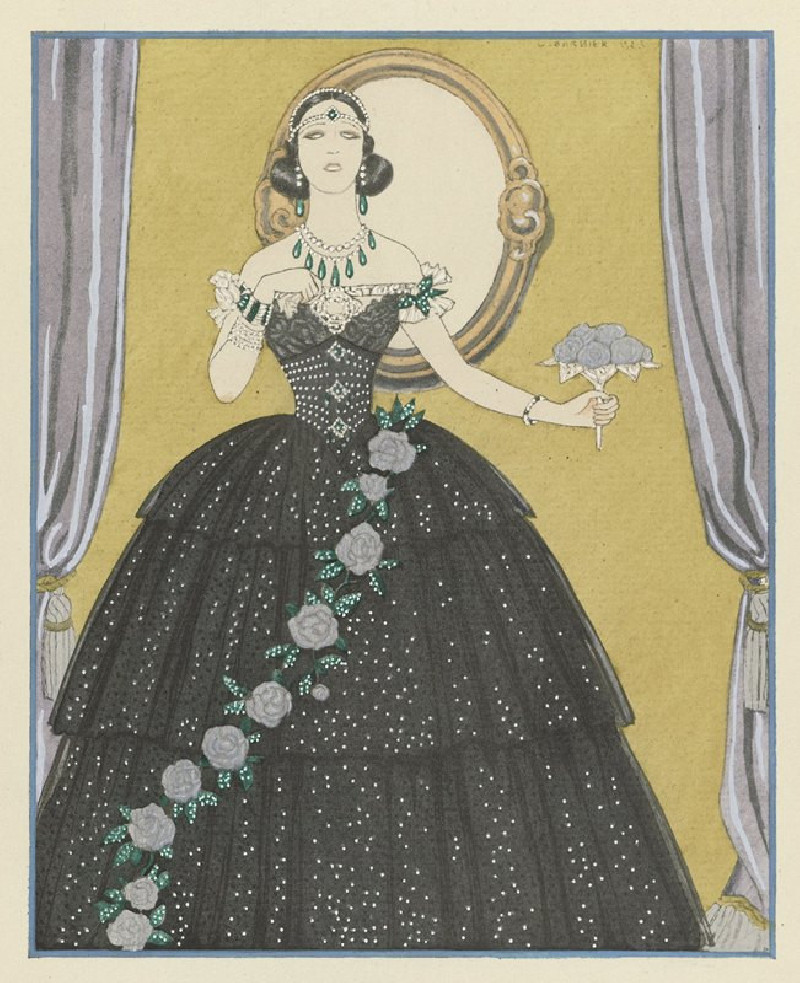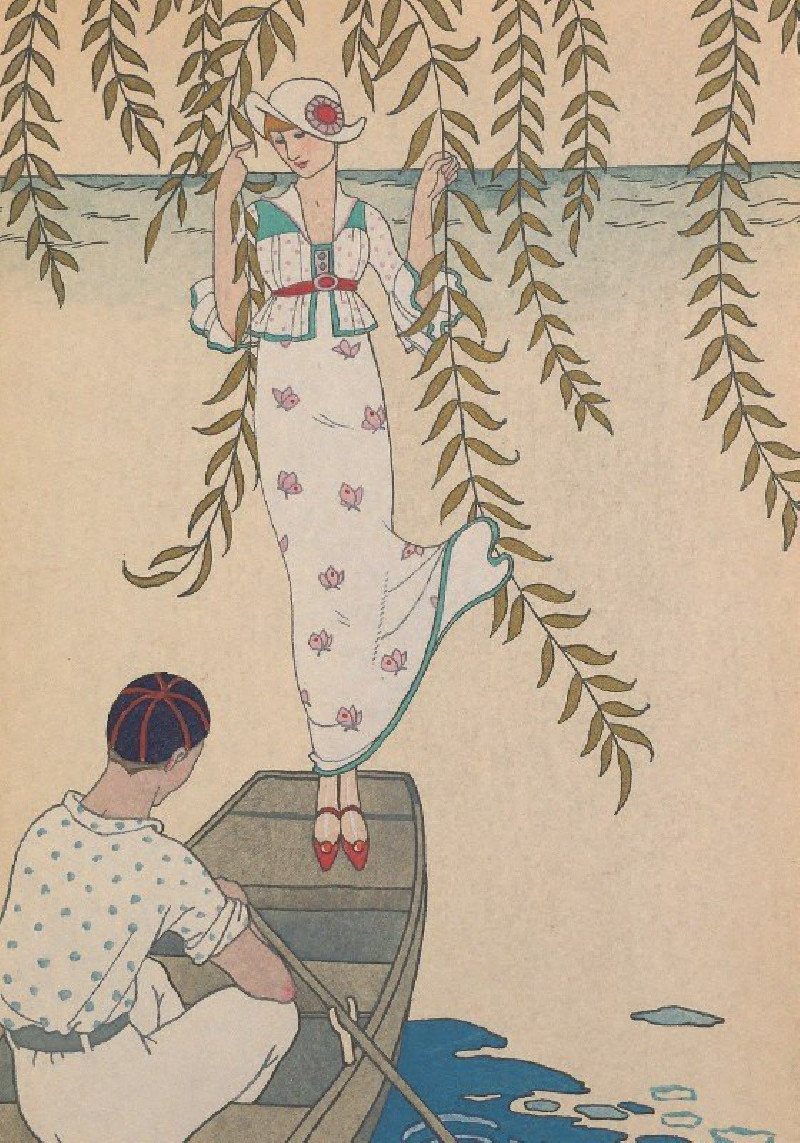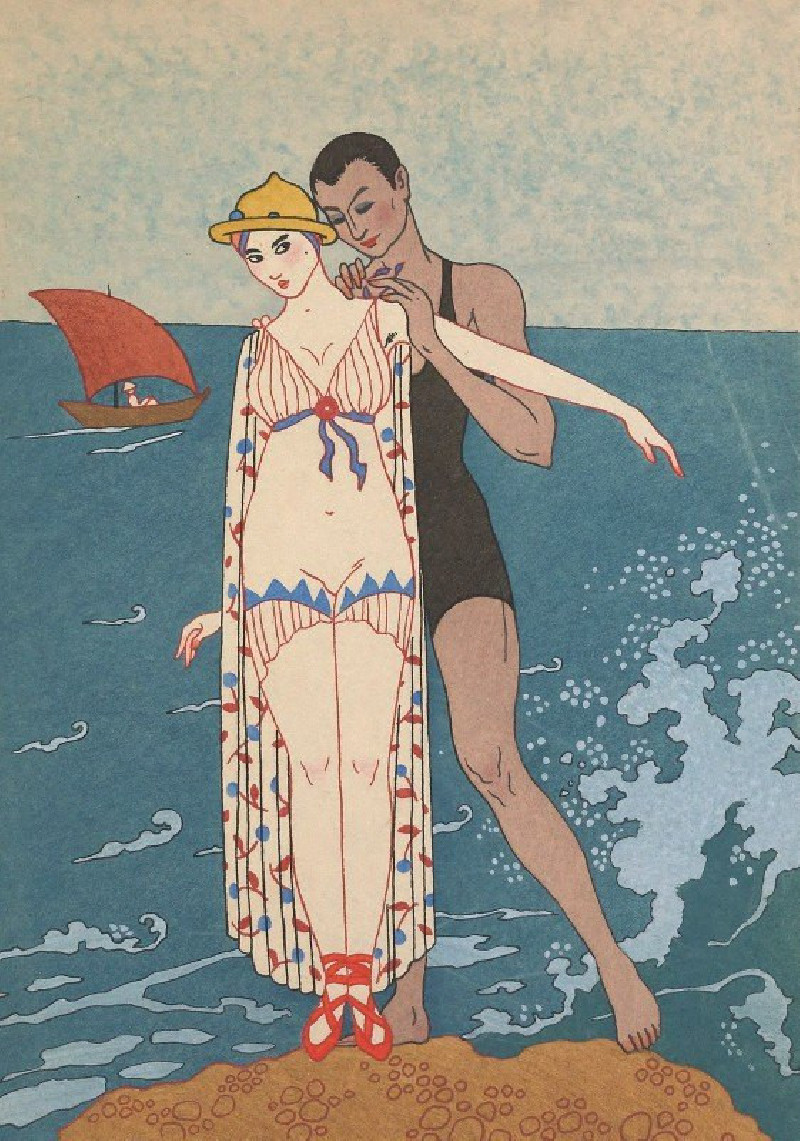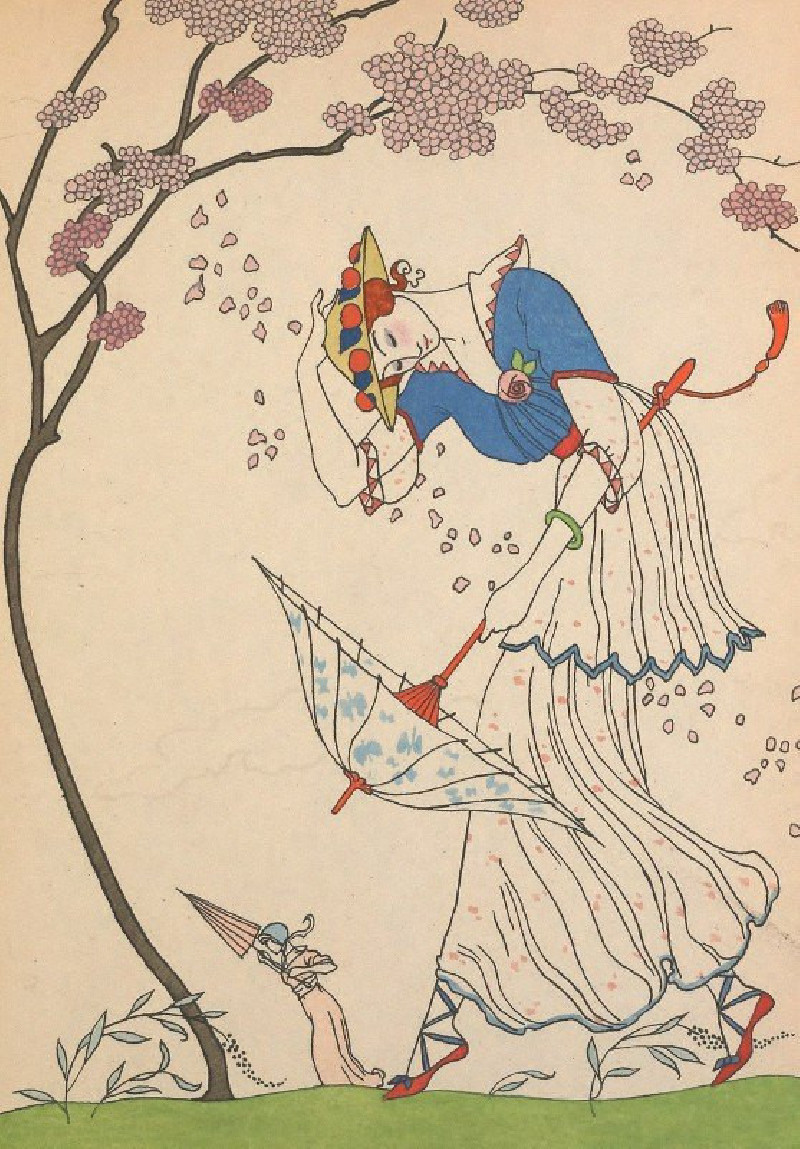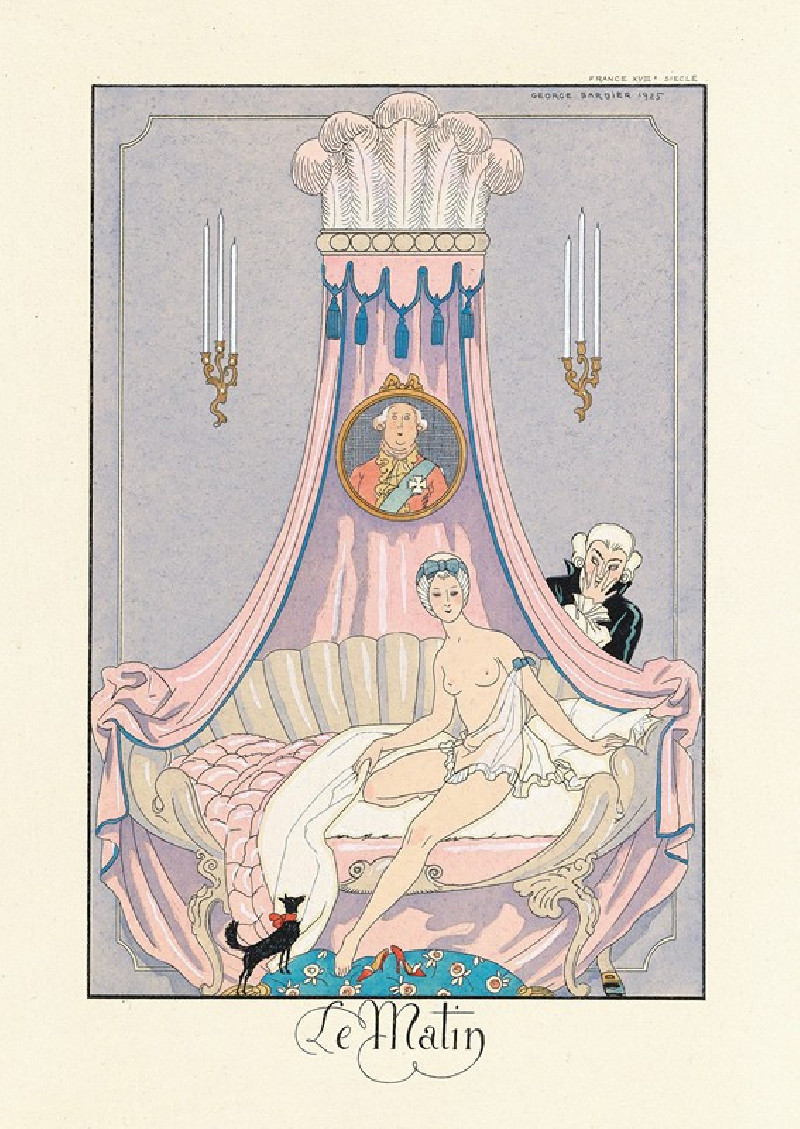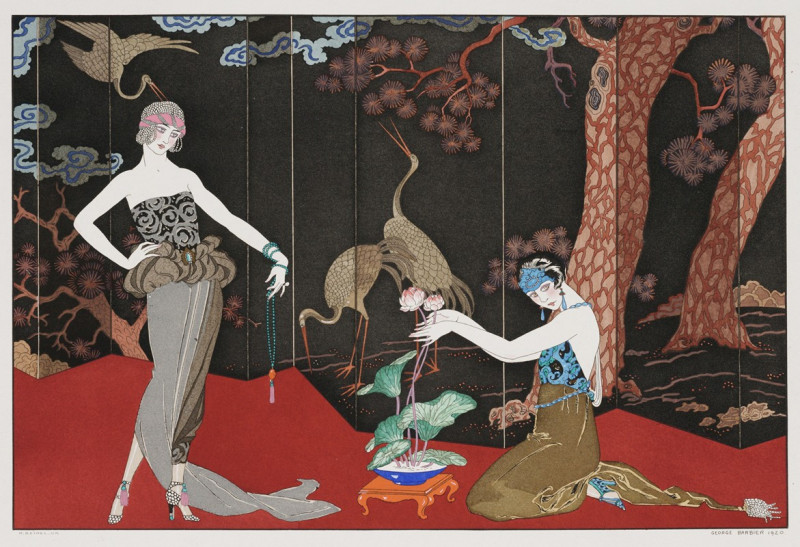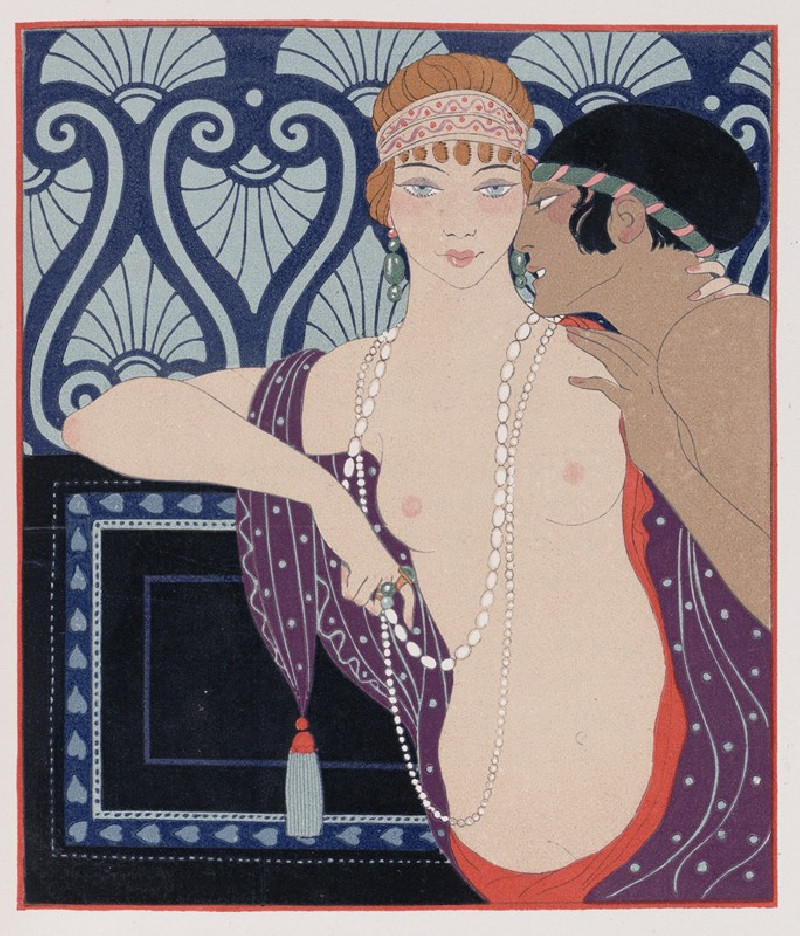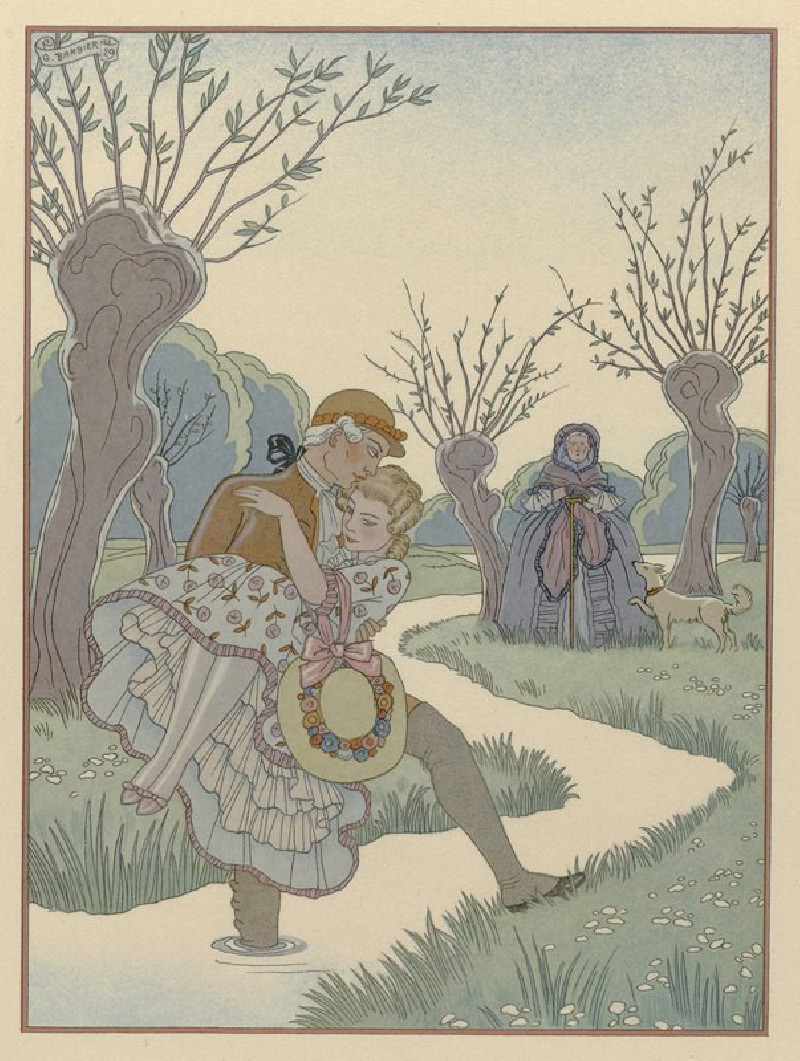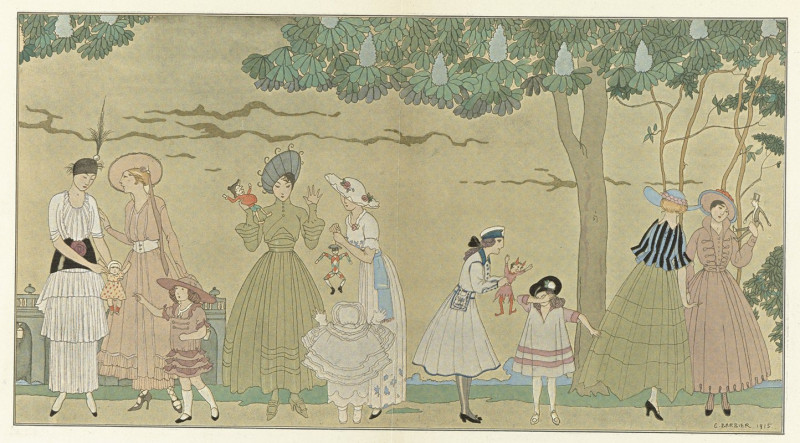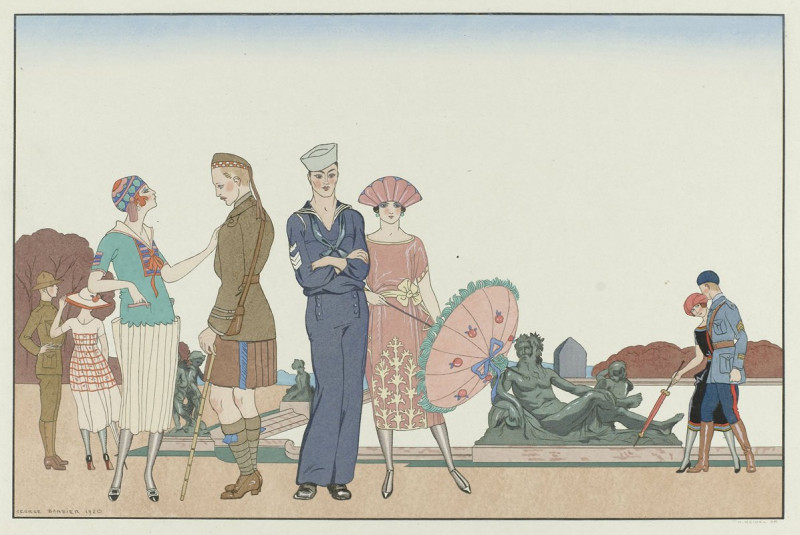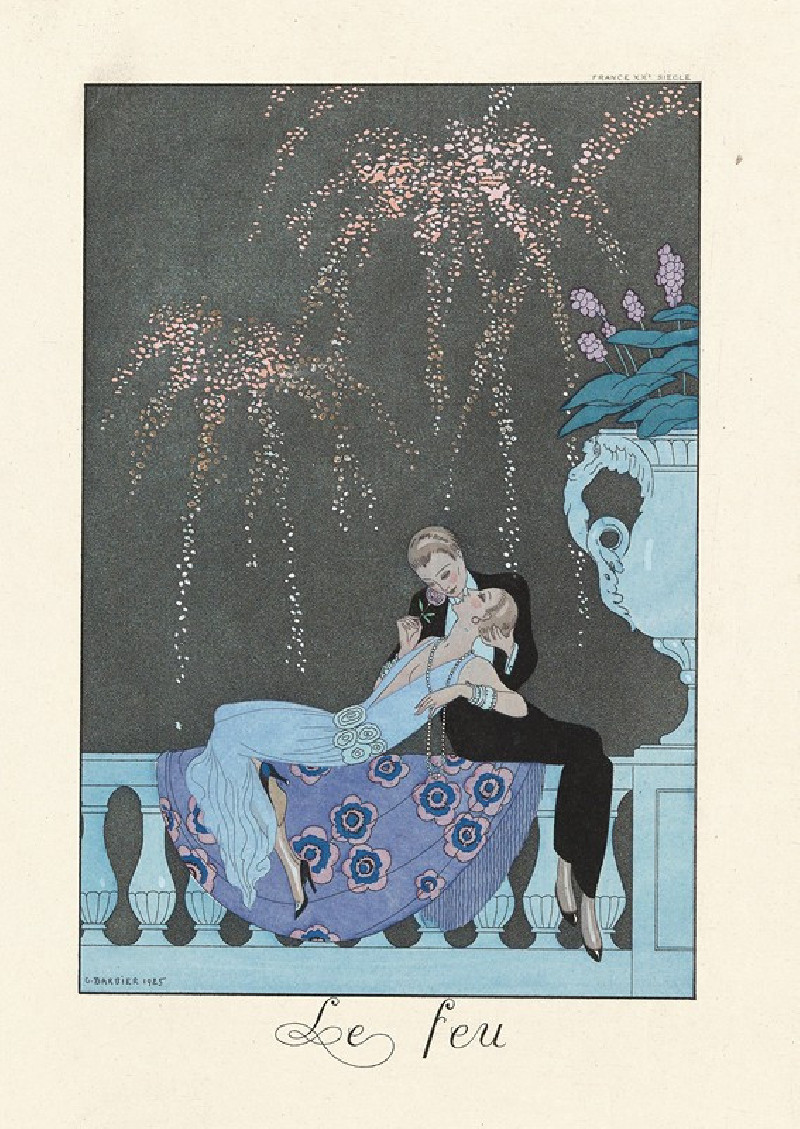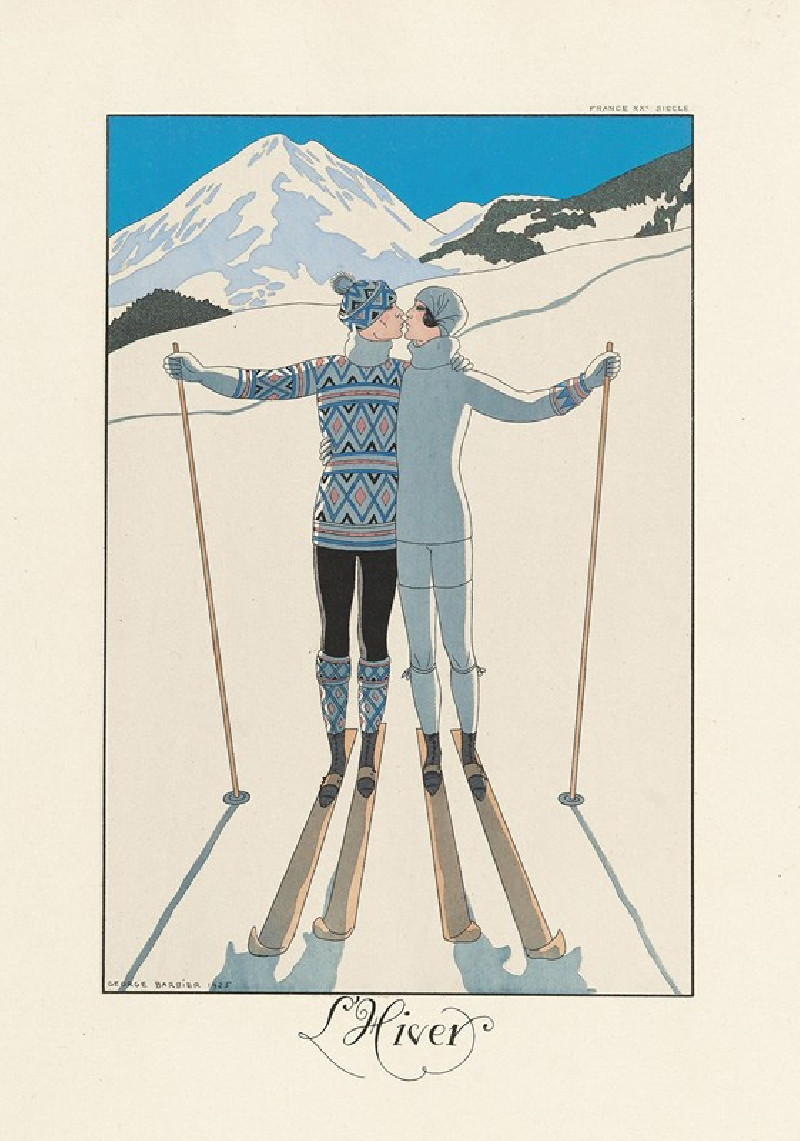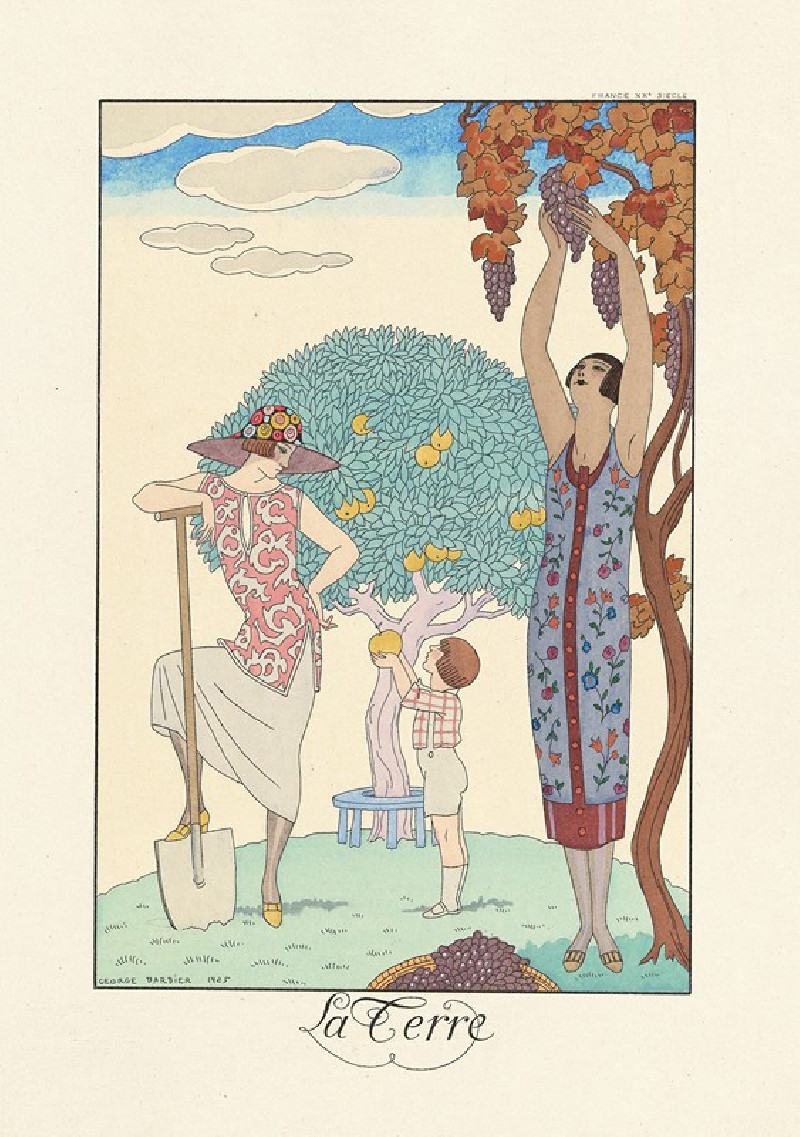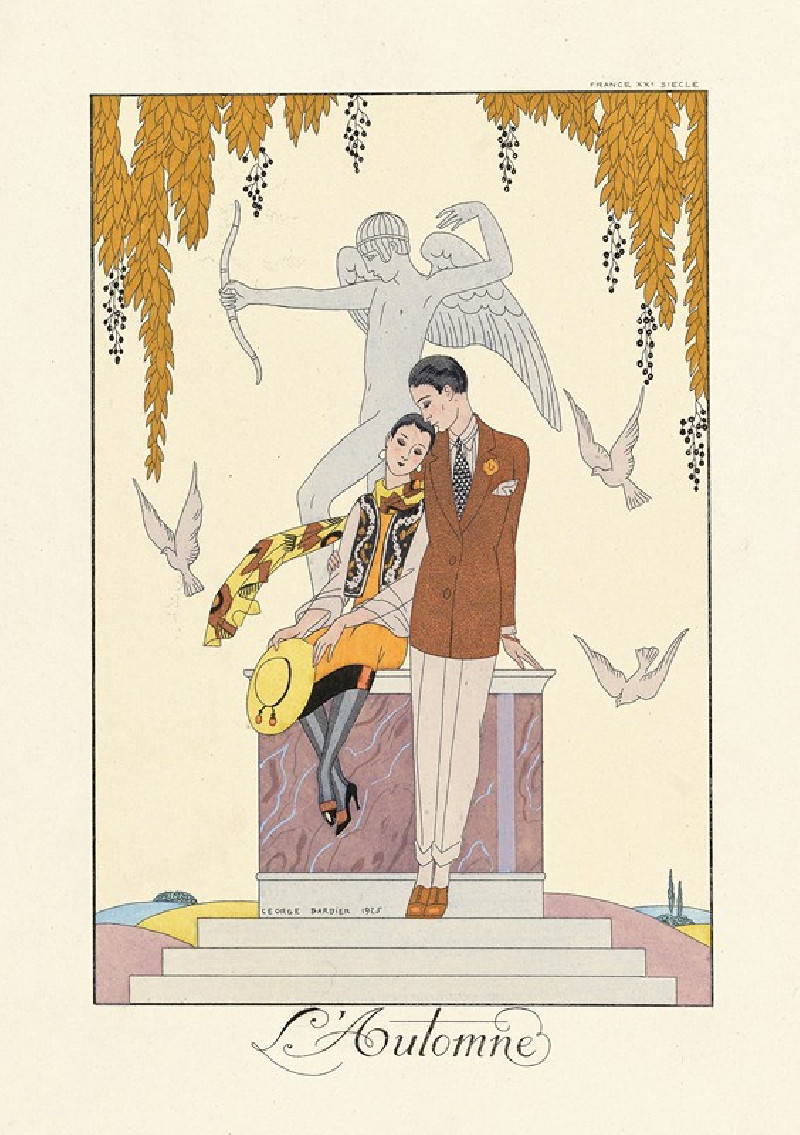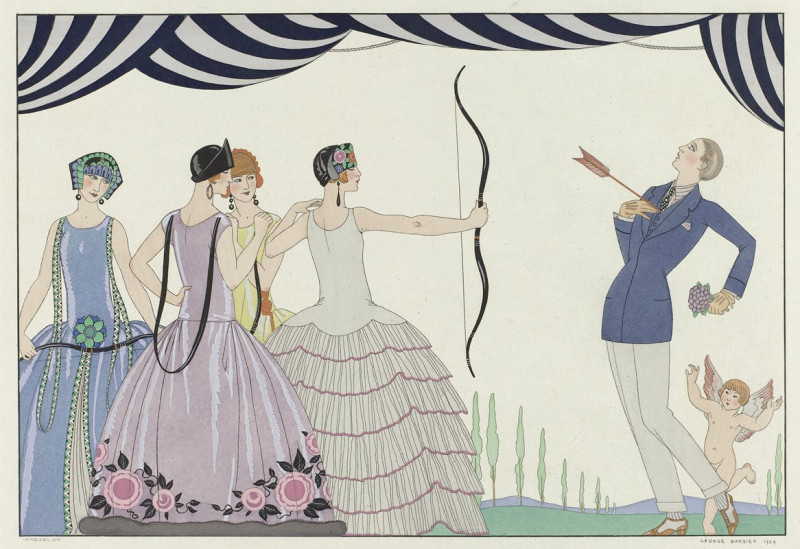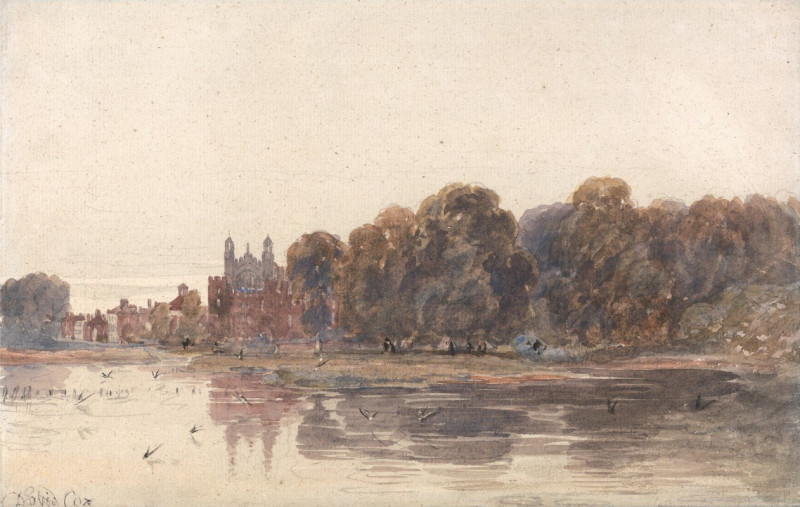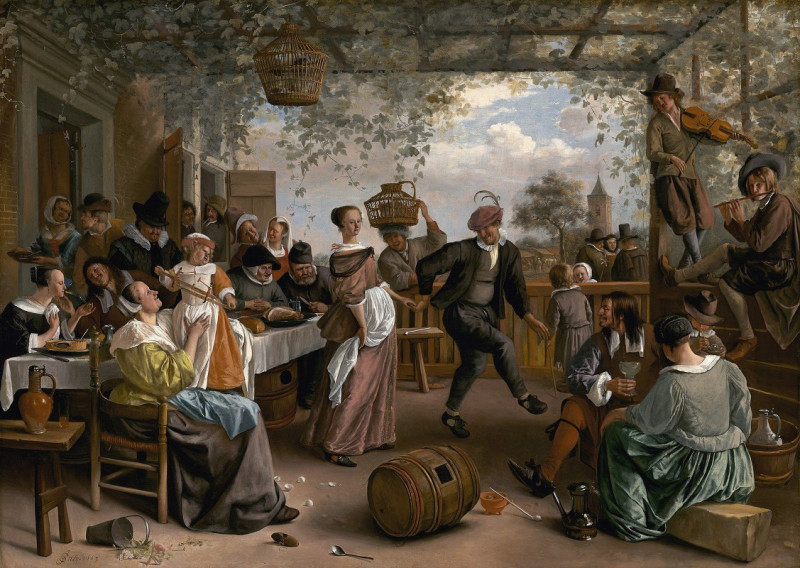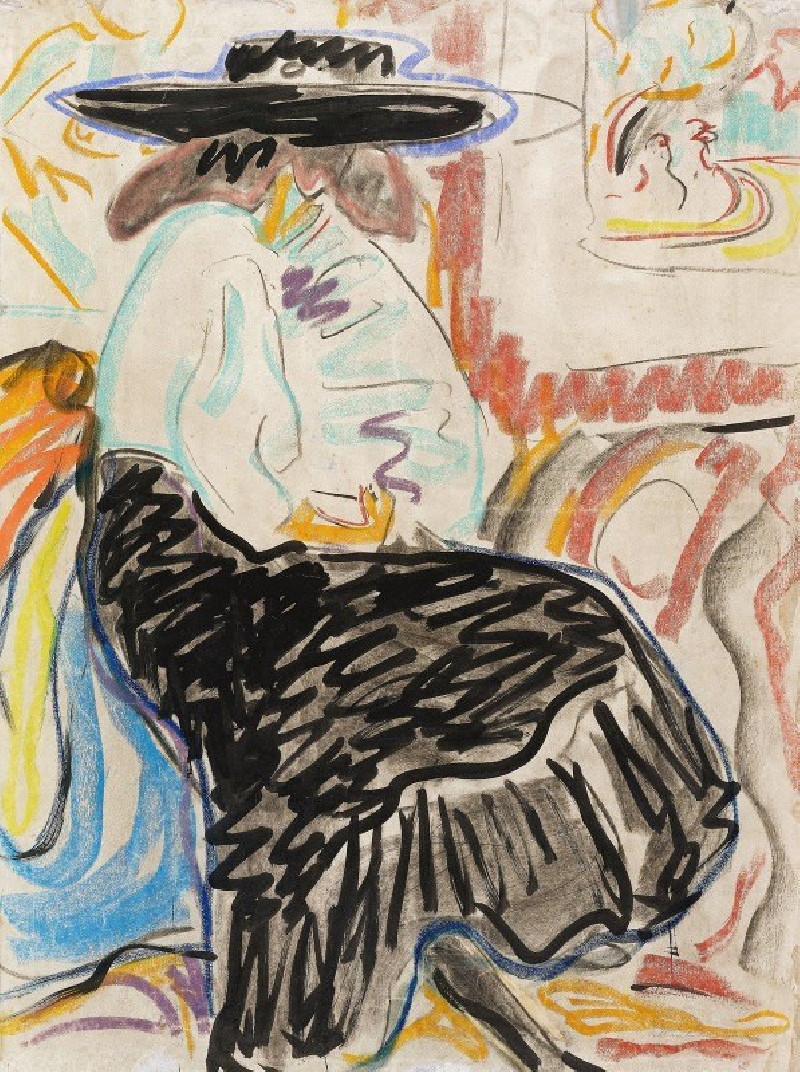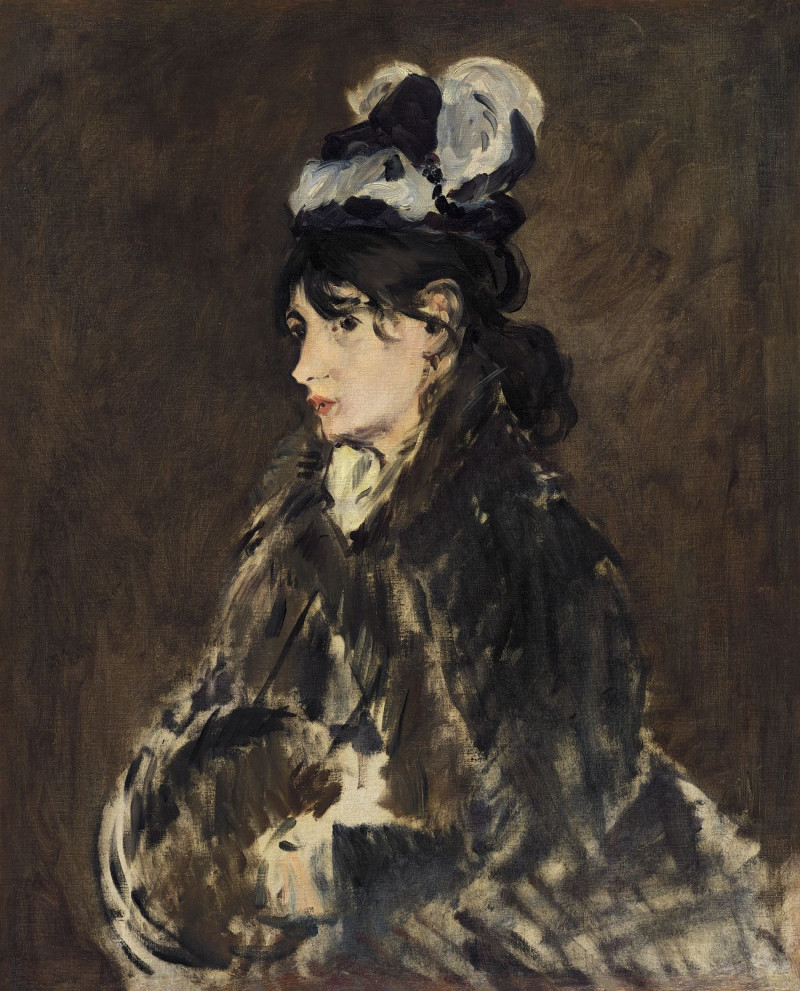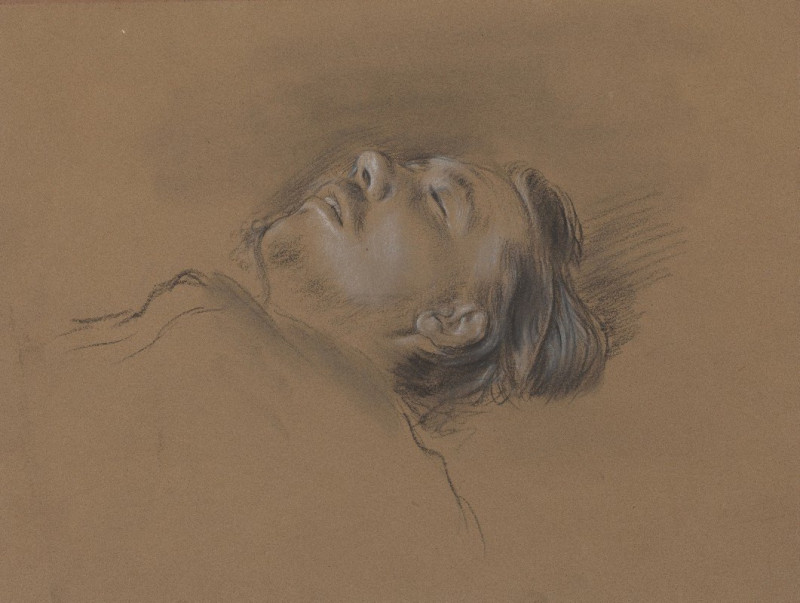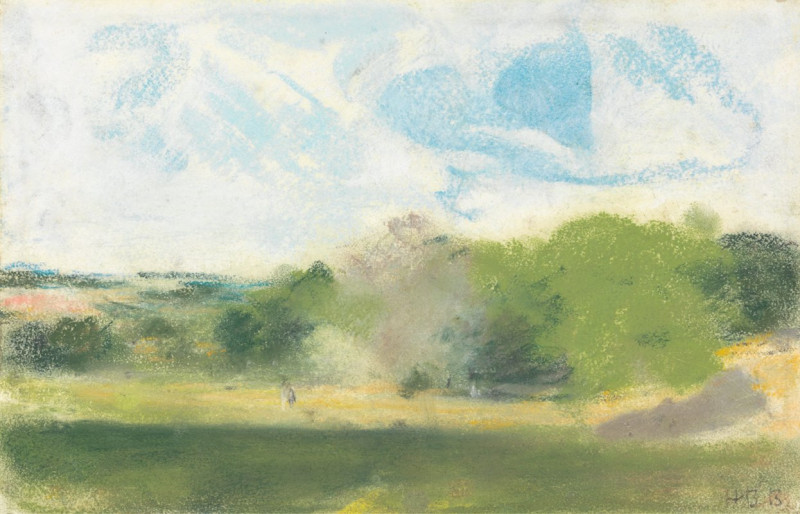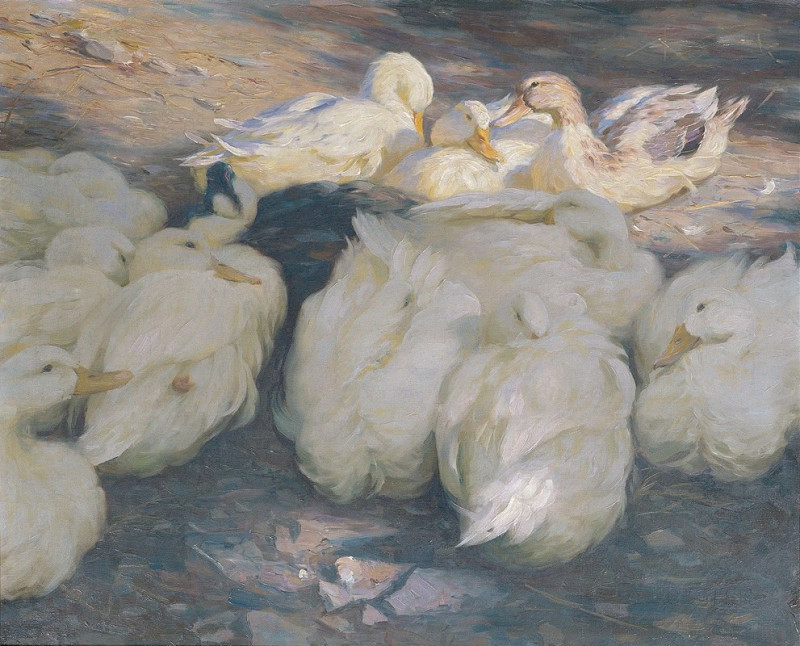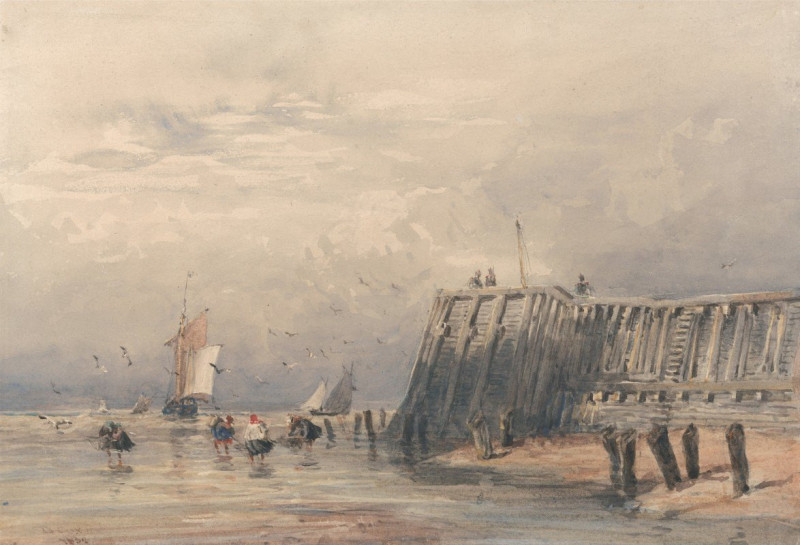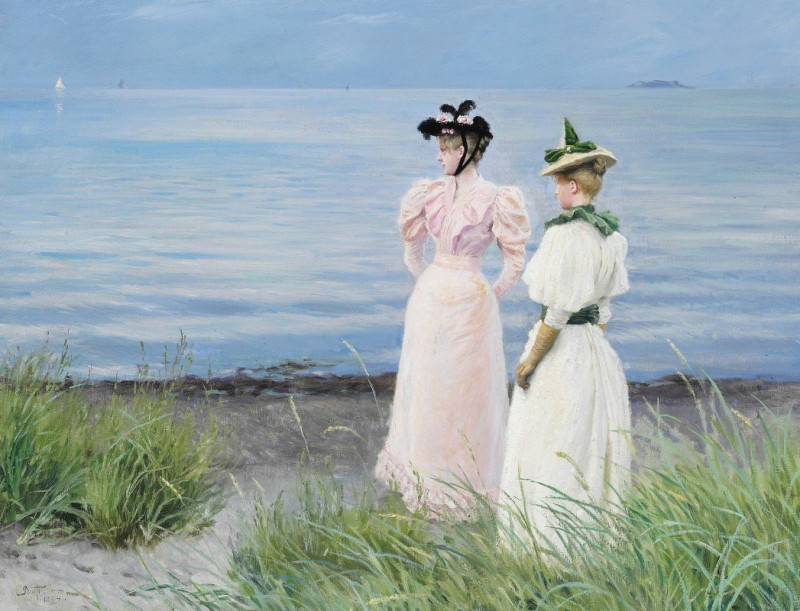L’Amour est aveugle (1920)
Technique: Giclée quality print
Recommended by our customers
More about this artwork
Welcome to a visual journey through "L’Amour est aveugle" (Love is Blind), a captivating artwork created by George Barbier in 1920. This enchanting painting invites viewers into an elegant world filled with grace and movement, perfectly capturing the essence and exuberance of the era.Set against a garden backdrop adorned with classical arches and a striking black and white checkered floor, the scene depicted is both lively and whimsical. Central to the artwork is a blindfolded man, dressed sharply in a dark suit. He is guided in his steps by two women at each side, while two others, also clad in the fashionably artistic and colorful dresses typical of the 1920s, flank the group, their poses full of motion and rhythm.The women are illustrated with a distinctive elegance and style that reflects the Art Deco influence prevalent during the time. Each figure is adorned with patterned garments featuring ornamental designs that suggest movement and give life to their dance. The contrasting colors and patterns of their dresses enhance the dynamic nature of the composition.In a harmonious blend of color and form, Barbier uses soft pastels alongside bold lines to create a sense of depth and richness. The tranquility of the grey sky and serene doves add a layer of symbolic meaning to the piece, perhaps suggesting the peace and blindness of love itself.Barbier's skill in illustrating a narrative that is as timeless as it is beautiful makes "L’Amour est aveugle" a masterpiece that transcends time, continuing to charm and engage audiences with its elegant representation of the playful yet perplexing nature of love.
Delivery
Returns
George Barbier (1882–1932) became one of the most renowned French Art Deco illustrators after his exhibition of ninety costume drawings at the Galerie Boutet de Monval in Paris. Being a distinguished artist of the Art Deco movement, he created fashion designs for several leading couturiers and fashion houses during the time. Barbier was widely acclaimed for the design of costumes, jewelry, wallpaper, and glasswork. His creations were published in famous magazines including Gazette du Bon Ton, La Vie Parisienne, and Vogue.

